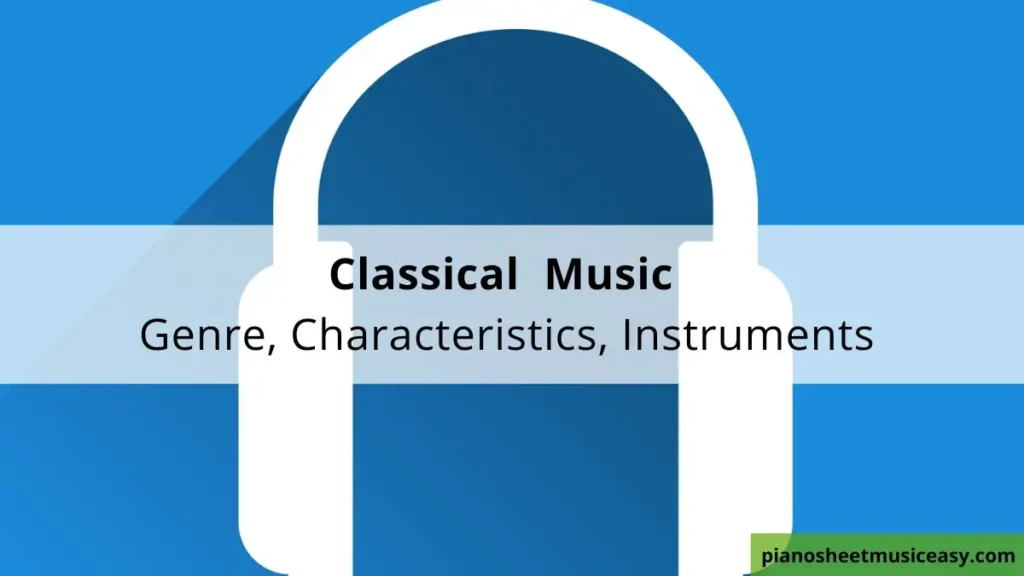Classical sheet music refers to music that is written in the classical tradition and is intended to be performed by classical musicians. It is typically written in standard notation, which is a system of symbols that represent specific pitches, rhythms, and other musical elements. Classical sheet music can be found for a wide range of instruments, including piano, violin, cello, flute, and many others. Many classical compositions are available in multiple editions, with different arrangements for different instruments or ensembles.

Classical music Characteristics
Classical music is characterized by its complexity and attention to form and structure. Some of the key characteristics of classical music include:
- Written for orchestras: Classical music is typically written for orchestras, which may include strings, woodwinds, brass, and percussion instruments.
- Formal structure: Classical music is often composed in a formal structure, such as sonata form or rondo form.
- Melody and harmony: Classical music often features complex melodies and harmonies, with multiple melodies played simultaneously.
- Dynamics: Classical music often includes changes in dynamics or the volume of the music.
- Timbre: Classical music often features a wide range of timbres or the unique “color” of different instruments.
- Texture: Classical music can have a wide range of textures, from thick and complex to thin and transparent.
- Notation: Classical music is typically written in standard musical notation, which allows for the precise communication of the composer’s intentions to performers.
Classical music instruments
There are many instruments commonly used in classical music, including:
- String instruments: These include the violin, viola, cello, and double bass.
- Woodwind instruments: These include flutes, clarinets, oboes, and bassoons.
- Brass instruments: These include horns, trumpets, trombones, and tubas.
- Percussion instruments: These include timpani, snare drum, and a variety of other percussion instruments.
- Keyboard instruments: These include the piano and harpsichord.
- Plucked string instruments: These include the guitar and harp.
- Other instruments: There are many other instruments that are occasionally used in classical music, such as the mandolin, accordion, and even the electric guitar.
Each of these instruments has a unique sound and is used in different ways in classical music. For example, string instruments are often used to play melodies, while brass instruments are used to play fanfare and other bold, dramatic passages.
Classical music Artists
There have been many notable classical music artists throughout history. Some of the most famous classical composers include:
- Ludwig van Beethoven (1770-1827): A German composer and pianist, Beethoven is widely considered one of the greatest composers in the history of classical music. His works include nine symphonies, five piano concertos, and numerous sonatas, string quartets, and piano sonatas.
- Wolfgang Amadeus Mozart (1756-1791): A prolific composer from Austria, Mozart is remembered for his operas, symphonies, and chamber music. He was a child prodigy and composed more than 600 works in his short life.
- Johann Sebastian Bach (1685-1750): A German composer and musician, Bach is known for his intricate keyboard music and choral works. His compositions include the Brandenburg Concert, the Well-Tempered Clavier, and the Mass in B Minor.
- Pyotr Ilyich Tchaikovsky (1840-1893): A Russian composer, Tchaikovsky is known for his symphonies, operas, and ballets. His works include the ballets The Nutcracker and Swan Lake, and the symphonies Symphony No. 5 and Symphony No. 6 (Pathétique).
- Frederic Chopin (1810-1849): A Polish composer and pianist, Chopin is known for his solo piano music, including preludes, études, and waltzes. His music is characterized by its technical demands and emotional depth.
